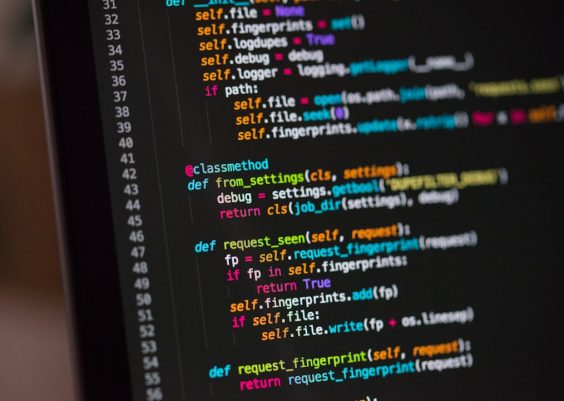Software development is full of occasional hurdles and errors, many of which are cryptic or difficult to diagnose—especially in lower-level languages such as C and C++. One of the most dreaded and often misunderstood errors developers encounter is SIGSEGV, or the segmentation fault. This kind of error indicates that a program has attempted to access memory in a way it’s not allowed to, and results in a crash that can be both frustrating and difficult to debug. Understanding what causes SIGSEGV, how to identify it, and how to prevent and fix it is crucial for building stable, reliable software.
Contents
TL;DR
SIGSEGV stands for “Segmentation Violation” and is a type of fault raised by hardware when a program accesses memory incorrectly. It typically happens due to things like null pointer dereferencing, out-of-bounds array access, or stack overflows. Common in low-level languages like C and C++, catching and fixing a SIGSEGV often requires the use of tools like debuggers or memory checkers. Preventing it involves good practices in memory allocation and conscientious code review.
What Is SIGSEGV?
A SIGSEGV (Segmentation Fault) is an error signal sent by the operating system to a program when that program attempts to access protected, non-existent, or unauthorized areas of memory. It is among the most serious runtime errors in native code environments because it usually results in the immediate termination of the offending program.
In technical terms, memory on modern operating systems is divided into segments, with restrictions on read and write permissions. A segmentation fault occurs when a process tries to:
- Read from or write to memory it does not own
- Access memory beyond its current stack or heap boundaries
- Dereference a null or uninitialized pointer
- Use a pointer after the memory it pointed to has been freed
These types of behaviors are illegal because they can disrupt the proper operation of the OS and lead to data corruption or security vulnerabilities. As a result, the OS intervenes by sending the signal SIGSEGV and forcibly stopping the process.
Common Causes of SIGSEGV
Although the reasons may vary slightly depending on the programming language or environment, most SIGSEGV faults can be traced back to a handful of common programming errors:
- Null Pointer Dereferencing
Dereferencing a pointer that is set to
NULLleads to undefined behavior and usually triggers a segmentation fault. - Buffer Overflows
When code writes more data to a buffer than it can hold, it may overwrite adjacent memory, leading to invalid memory access.
- Dangling Pointers
Represents the scenario where a pointer accesses memory that has already been freed or returned to the system.
- Improper Pointer Arithmetic
Incorrect computation of pointer values that result in invalid memory addresses.
- Stack Overflows
Deep recursion or excessively large stack allocations can lead to exceeding the stack limit.
Here is a visual example representation of improper memory access:

How To Identify a SIGSEGV
When a segmentation fault occurs, the most immediate sign is a runtime crash. Depending on your system and compilation flags, you may see an error message like:
Segmentation fault (core dumped)
In order to *identify* the offending code, developers typically use one or more of the following tools:
- GNU Debugger (gdb)
This allows you to run the program step-by-step and examine the state of memory and variables at the time of the crash.
- Valgrind
A memory analyzer that helps detect memory leaks and invalid memory access, producing detailed reports about what went wrong where.
- AddressSanitizer (ASan)
A runtime memory error detector for C/C++ that catches out-of-bounds accesses and use-after-free bugs.
For example, running your compiled C program with Valgrind might yield output like the following:
==1234== Invalid read of size 4 ==1234== at 0x10000F20: main (example.c:10) ==1234== Address 0x0 is not stack'd, malloc'd or (recently) free'd
How To Fix a SIGSEGV
Fixing a segmentation fault requires a careful look into how memory is allocated, accessed, and managed in your application. Follow these best practices and procedures to resolve the error:
- Check All Pointers for Null
Before dereferencing a pointer, always ensure it’s not
NULL. This simple practice can eliminate a huge class of segmentation faults. - Validate Array Indexing
Ensure that all array accesses are within bounds. Buffer or array overflows are notoriously hard to track and often lead to unpredictable behavior and memory corruption.
- Use Memory Analysis Tools
Tools like Valgrind and AddressSanitizer can pinpoint exact locations in your code where memory is misused, helping you fix them rapidly.
- Avoid Dangling Pointers
After calling
free()on a pointer, set it toNULLimmediately to reduce the chance of accidentally using it later. - Limit Recursion Depth
Too much recursive function calling without proper base cases can overflow the stack. Try converting recursive logic to iterative when possible.
Here’s a diagrammatic representation of good and bad memory access patterns:

Preventing SIGSEGV: Best Practices
While not all bugs can be foreseen, developers can adopt good habits to reduce the odds of encountering a segmentation fault:
- Use Modern C++ Constructs
Prefer smart pointers (
std::shared_ptr,std::unique_ptr) over raw pointers in C++. They manage memory automatically and reduce chances of memory errors. - Leverage Static Analysis
Use static code analyzers to detect potential pointer misuse and buffer overflow situations before the code is even run.
- Code Review and Pair Programming
A fresh pair of eyes can often detect unsafe or fragile memory handling logic that even test cases might miss.
- Adopt Defensive Programming Techniques
Always assume inputs and memory states can be invalid. Validate everything and fail gracefully wherever possible.
Language-Specific Notes
Although this error is primarily observed in C/C++ environments, similar issues can occur in other systems programming languages such as Rust or Go, though they often offer additional protections.
- In C: The responsibility lies entirely with the programmer. Errors are not caught at runtime unless explicitly handled.
- In C++: Smart pointers and abstractions make it easier to manage memory, but raw pointer misuse can still cause SIGSEGV.
- In Rust: The compiler enforces safety rules that make segmentation faults rare without using unsafe blocks.
Conclusion
SIGSEGV errors are critical signals that cannot be ignored in systems programming. They often indicate that something is deeply wrong with how a program interacts with memory. Yet, these problems are not insurmountable. With the right tools, disciplined programming practices, and a careful approach to memory management, most segmentation faults can be understood, tracked down, and fixed effectively.
As developers, it’s essential not only to know *what* causes these errors but also to adopt a mindset that puts stability and safety first. Doing so reduces the likelihood of these costly crashes and leads to more robust, maintainable software systems.




